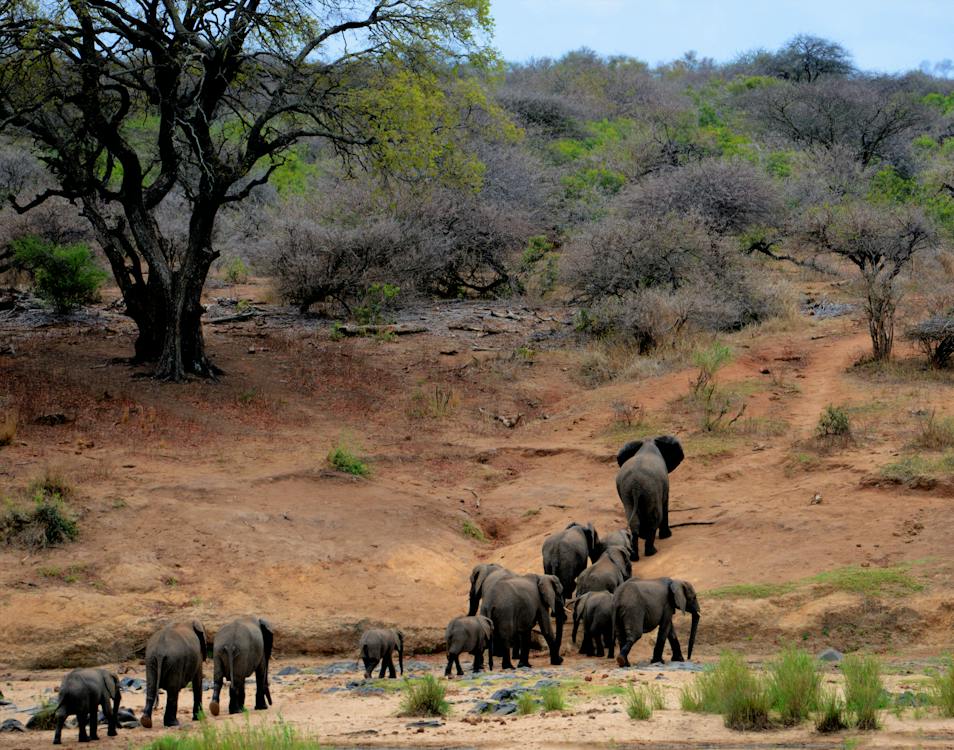The Hwange National Park, also known as the Land of the Giants, and formerly known as Wankie Game Reserve, is considered as the largest natural reserve in Zimbabwe. It is situated between Victoria Falls and Bulawayo near to Dete. The national park’s name came after a local Nhanzwa chief.
Founded in 1928, Hwange National Park’s first warden is Ted Davison, who befriended a Manchester-born Rhodesian Railways stationmaster named James Jones. Even before its classification as a protected National Park, the land used to be a royal hunting ground for the Ndebele warrior-king Mzilikazi and Lobengula. However, the arrival of the first white hunters started the slaughter of thousands of wildlife. The total land covers more than 14,600 kilometers or 1,460,000 hectares, teeming with wildlife more than any other national park in Zimbabwe.
The Hwange National Park’s main entrance is a 30-min flight or two-hour drive south of Victoria Falls. Given its massive land size, you can expect an astounding breadth of wildlife species, as well as various habitats. More than 100 mammal species and almost 400 species of birds can be sighted in this national park alone.
And that’s just the tip of the iceberg—bask yourself in the beautiful sight of over 40,000 elephants. The Hwange National Park is one of the biggest homes of elephants in the entire world—a breath-taking view you surely don’t want to miss!
The geography and geology of Hwange National Park
Most of the national park’s area compromises some regions of the Kalahari Desert. In the north-west, basalt lava flows of the Batoka Formation. Located in the north-central area are granites and gneisses of the Kamativi-Deter Inlier. The north and north-west sections are drained by the Lukosi and Deka rivers, while the south is drained by the Gwabadzabuya River.
Flora features of the Hwange National Park
The edge of the Kalahari Desert is an area with little water and scarce xerophile vegetation. However, the Kalahari woodland is full of Zambezi Teak, Kalahari bauhinia, and Sand Camwood. The north and north-west regions of the park are mopane woodlands.
Fauna features of the Hwange National Park
The Hwange National Park is home to more than 500 animal species, including 19 large herbivores and 8 large carnivores. It is also the only protected national park where Brown Hyenas and Gemsbok occur in small populations.
The population of Cape wild dogs in Hwange National Park is believed to be the largest surviving group in the African continent today, along with those groups present in Selous Game Reserve and Kruger National Park. African Leopards, Spotted Hyenas, Cheetahs, Buffalos, Giraffes, and Lions can also be admired in this national park. This is where Cecil, a famous lion, used to live and killed due to illegal hunting. Cecil’s illegal killing caused a national uproar amongst locals, who called the attention of Zimbabwe’s president Robert Mugabe to terminate big game hunting permits.
The Climate in Hwange National Park
Here lies a quick guide to the seasons and their corresponding months:
Rainy season – Between late November and April.
Summer season – September to May.
Winter season – Mid May to early August, although the days are warm. Evenings can get extremely cold but temperatures below the freezing point are uncommon.
Flora features of the Hwange National Park
It’s always best to know the most viable weather conditions for your visit to Hwange National Park. June, July, August, September, October, and early November are the best months to visit the park. During these months, there are lesser water sources brought by the hot weather. This leads to large animal groupings around waterholes, making it a rewarding sight for tourists to appreciate.
From late November to April, parched savannahs transform into lush fields. Grazing animals disperse, which makes game viewing limited. However, it is a great time to appreciate birdlife and see newly-born animals feed on the abundance of food sources. January is an excellent time to visit for wildlife photographers since abundant green vegetation and dramatic cloud formations happen during this month. Walking in safaris may not be advisable in dense and thick vegetations, but bird watchers are welcome to visit since migratory birds will flock to the area.
Fun activities you can do in Hwange National Park include walking in safaris, camping, going to caravan sites, dining in restaurants, shopping in supermarkets, enjoying picnic, and many more.
